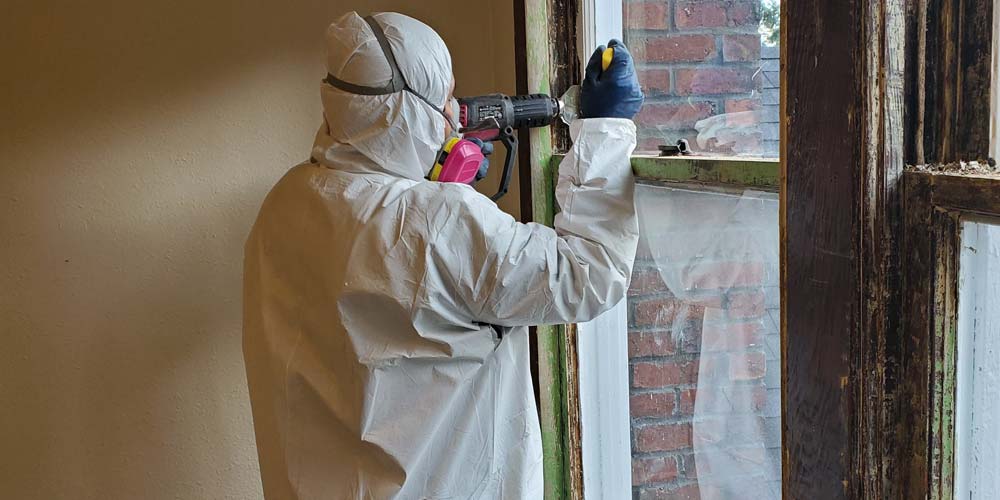Lead Paint Removal Service-- NYC's Trusted Solutions for Lead Safety
Comprehensive Guide on Effective Lead Infraction Removal Methods
In the realm of environmental safety and security, addressing lead offenses requires a precise and structured technique. This detailed overview begins by highlighting the essential preliminary actions of recognizing lead risks through advanced evaluation and screening approaches. The overview specifies on the significance of sticking to stringent safety and security protocols throughout the elimination procedure, including the use of proper PPE and isolating influenced areas.
Determining Lead Hazards
Identifying lead hazards is a crucial initial step in minimizing the dangers connected with lead exposure. Lead, a poisonous metal, can be existing in different environmental tools, including paint, dirt, water, and dust. It presents severe health and wellness threats, specifically to children and expecting females, leading to neurological damage and developing hold-ups. For that reason, exact recognition of possible lead sources is essential for effective removal.
The preliminary stage in recognizing lead threats involves understanding common lead sources within the built atmosphere. Structures developed before 1978 are especially prone because of the widespread usage of lead-based paint throughout that duration. Furthermore, dirt contamination can happen from degrading outside paint, industrial discharges, or historical use leaded gasoline.
Another significant resource is lead piping and pipes components, which can seep lead right into drinking water. Consumer products such as toys, ceramics, and imported items might likewise consist of dangerous lead levels. Significantly, work environments and hobbies entailing lead can track impurities into homes.
Assessment and Testing
When addressing lead risks, reliable assessment and testing are extremely important. Initial assessment typically involves a visual examination to determine potential lead resources, such as deteriorating paint or polluted dust.

Dust wipe tasting is one more essential method, especially in domestic settings. By accumulating examples from floors, windowsills, and various other surfaces, this technique gives understandings into prospective direct exposure risks. Dirt testing around building perimeters is necessary to discover lead contamination that might position hazards, especially to children.
Safe Removal Procedures
Upon completing thorough assessment and testing, applying secure elimination procedures is the next important phase in attending to lead hazards. This process ensures that lead-contaminated materials are successfully and safely eliminated, lessening threat to both employees and citizens. The initial step includes isolating the affected area making use More Bonuses of plastic sheet and appropriate sealing strategies to stop the spread of lead dust.
Workers must wear appropriate individual safety equipment (PPE), consisting of respirators, gloves, and non reusable coveralls, to mitigate exposure. Utilizing specialized devices and wet techniques, such as wet sanding or utilizing HEPA-filtered vacuum cleaners, minimizes the diffusion of lead fragments. It is essential to avoid completely dry sanding or rough blowing up, as these approaches can create dangerous lead dirt.
Waste disposal is another vital part; all infected materials must be safely bagged and identified according to EPA and neighborhood regulations. Additionally, comprehensive cleansing of the job location with HEPA vacuum cleaners and wet cleaning guarantees the elimination of recurring lead fragments.
Post-Removal Confirmation

Confirmation of effective lead removal, called post-removal verification, is critical to make sure the safety and habitability of the remediated area. This process entails a collection of careful assessments and tests developed click for more info to find any kind of residual lead particles that may pose wellness threats. The preliminary step generally includes a visual evaluation to examine the completion and high quality of the removal work. This evaluation ensures that all recognized resources of lead have been resolved which no visible indications of contamination stay.
Complying with the visual evaluation, environmental tasting is performed. This involves accumulating dirt, dirt, and in some cases water examples from the remediated location. Recognized labs analyze these samples to measure lead levels, guaranteeing they drop below the security limits developed by governing bodies such as the Environmental Security Company (EPA)
On top of that, air top quality screening may be executed to identify air-borne lead fragments, especially in situations where comprehensive lead-based paint elimination or improvement has actually happened. The outcomes of these examinations offer quantitative information confirming that the lead look at here levels are within permissible restrictions.
Ultimately, post-removal verification offers as a crucial checkpoint, validating the effectiveness of the lead abatement initiatives and guarding the wellness of residents and visitors.
Preventative Measures and Upkeep

A vital safety net includes the use of lead-safe certified professionals for any type of restoration, repair, or paint activities. These specialists are trained in practices that minimize lead dirt and debris. Additionally, maintaining painted surfaces to prevent breaking or peeling is essential, as deteriorating paint can launch lead fragments into the environment.
Educational efforts targeting residential or commercial property proprietors and lessees relating to the risks of lead and the importance of reporting any kind of possible risks can better improve preventative initiatives. Routine cleaning utilizing HEPA vacuums and wet mopping methods can significantly minimize lead dirt build-up.
Verdict
In recap, reliable lead infraction removal demands a meticulous technique including detailed assessment, specific testing, and rigid removal treatments. Making certain safety via appropriate isolation and personal safety equipment continues to be extremely important. Post-removal confirmation using environmental tasting and air top quality screening corroborates compliance with recognized safety standards. Recurring assessments and maintenance are essential to mitigate future lead risks, therefore guarding public health and wellness and guaranteeing continual compliance with governing demands.